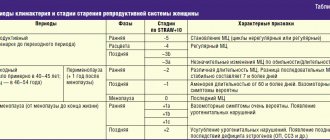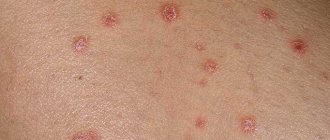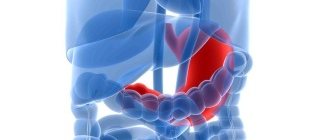Attention!
This information is intended for parents. It will allow you to identify the symptoms of scarlet fever in time and take your child to the doctor in a timely manner.
Scarlet fever is now considered a separate infectious disease. But, until the 16th century, it was not distinguished from other rash diseases. In 1556, the Italian physician Ingrassias first separated the symptoms of scarlet fever from the symptoms of measles. He called the new disease scarlet fever (from the word scarlatto - crimson in Italian).
A century later, the English doctor Thomas Sydenham fully described the clinical picture of the disease. In the pre-bacteriological era, ideas about scarlet fever were based on the miasmatic theory. It was considered the result of exposure to impurities on the body. In the 40s of the 20th century, in the works of the spouses Dick and V.I. Ioffe proved the streptococcal etiology of the disease.
Description
Scarlet fever is an acute infectious pathology. The disease is caused by beta-hemolytic streptococcus type A. It is transmitted from a patient by airborne droplets and contact. It is characterized by increased body temperature, the appearance of skin rashes, and sore throat. The oropharynx is predominantly affected by the causative agent of the disease, a characteristic exanthema appears, inflammation is accompanied by severe intoxication.
Scarlet fever is manifested by a characteristic symptom complex, including general intoxication, fever, and scarlet fever. Patients have a crimson tongue and enlarged regional lymph nodes. A pinpoint rash with fine scaly peeling is visible on the skin. The patient exhibits a characteristic exanthema.
The disease primarily affects children under ten years of age. Schoolchildren and adults who have crossed this age limit have a reduced susceptibility to infection with streptococcus. This is associated with the maturation of the immune system. It gives a specific reaction faster in response to the introduction of a pathogen, but this does not completely exclude the possibility of disease.
Scarlet fever most often affects children aged three to ten years. This is associated with an imperfect immune system and being in children's institutions, where infection often occurs.
In newborns and babies in the first year of life, scarlet fever is very rarely diagnosed. This is associated with the presence in the bloodstream of maternal immune cells that entered through the placenta.
What it is
Scarlet fever is an infectious disease caused by pathogenic bacteria - pyogenic streptococci. They provoke local inflammatory changes in the tonsils and pharynx area. Also, this group of microorganisms, during their life activity, releases toxic substances (toxins) into the blood, the most powerful of which is erythrogenic (scarlet fever) toxin.
How dangerous is streptococcal toxin?
The toxin leads to pathological changes in all organs, including the skin and mucous membranes, small vessels dilate, which causes the appearance of a characteristic rash. There is a disruption of the keratinization processes in the surface layer of the skin (epidermis) - the skin is severely flaky and flakes off. The toxin also damages red blood cells and other cells, causing fever, weakness and other symptoms of toxicity.
Streptococci can also cause serious allergic and autoimmune lesions caused by an excessive reaction of the immune system to scarlet fever toxin. As a result, the heart and kidneys are affected, and a disease called acute rheumatic fever develops.
Causes of scarlet fever
Causes scarlet fever in adults and children - beta-hemolytic streptococcus type A. It belongs to the genus of facultative aerobic, gram-positive bacteria Streptococcus, which have an ovoid shape.
Its source is a carrier of a pathogenic bacterium or a patient with this disease. Such people are especially contagious at the beginning of the disease. The risk of transmitting the pathogen to others completely disappears after three weeks from the onset of symptoms.
According to experts, up to 20% of the population are considered asymptomatic carriers of the scarlet fever pathogen. In rare cases, a person is a source of infection for several years.
The human body's natural susceptibility to the bacterium Streptococcus pyogenes remains at a high level throughout most people's lives. The immunity that develops in people who have had scarlet fever is type-specific.
The bacterium secretes an erythrogenic toxin; humans lack antitoxic immunity. This means that the risk of infection with other types of streptococcus is high. The maximum incidence of scarlet fever in children and adults occurs in autumn and winter.
Epidemiology
Scarlet fever is currently a rare disease, but it is found everywhere. The source of infection can only be a person.
The disease is called a childhood infection, along with whooping cough, measles, rubella, mumps and chickenpox. These infections are typical mainly for children of preschool and primary school age, since during this period of life they first find themselves in large children's groups, where they can meet a sick or hidden bacteria carrier. In adulthood, the disease is much less common.
From infection to the first symptoms it takes an average of 2 to 7 days4. The peak incidence is observed in the autumn-winter period.
How does infection occur?
They become infected with streptococcus through airborne droplets and household contact. Experts believe that the main method of infection is the spread of the pathogen through the air along with drops of saliva from an infected person. Healthy people inhale an aerosol containing microorganisms. Infected saliva from an infected person is scattered over a distance of up to one and a half meters.
The patient releases a large amount of the pathogen when coughing, sneezing, or talking into the environment. When these bacteria come into contact with food, alimentary transmission is possible. More often, people who have close contact with the source of infection become infected with scarlet fever.
The entry gate for the penetration of the pathogen into the body is the mucous membrane of the nasopharynx, pharynx, and less often the genital organs. Sometimes the pathogen enters the body through damaged skin. In the zone of bacterial invasion, a local infectious focus with typical necrotic manifestations appears.
Microorganisms multiply in it and release toxins into the blood, which contribute to the development of intoxication. The presence of this toxic substance in the bloodstream causes capillaries to dilate. On the skin this is manifested by the formation of a specific rash.
Gradually, the body develops antitoxic immunity, which helps the intoxication subside. Therefore, the rash disappears over time. Sometimes the pathogens themselves enter the bloodstream directly. This leads to damage to other organs and tissues, these include:
- lymph nodes;
- meninges;
- temporal bone tissue;
- hearing aid and others.
They develop purulent-necrotic inflammation.
Symptoms of scarlet fever in children and adults
The incubation period for scarlet fever lasts from one to twelve days. The disease begins acutely. First, the patient's temperature rises. Then signs of intoxication appear:
- muscle pain;
- increased heart rate;
- weakness;
- headache.
The febrile state is accompanied by drowsiness and apathy. Euphoria and increased mobility may occur. Intoxication often causes vomiting in most patients. Other symptoms of scarlet fever include:
- A sore throat. Redness of the tonsils, tongue arches, soft palate and posterior pharyngeal wall is detected. Sometimes follicular-lacunar tonsillitis forms. The mucous membrane is covered with a plaque of a purulent, fibrous, necrotic nature.
- Regional lymphadenitis. Lymph nodes become dense and painful.
- Raspberry tongue. By the fifth day of illness, the tongue becomes bright crimson. Plaque disappears from the surface. Hypertrophy of the papillae is detected. The lips are also painted crimson. This symptom occurs in adults with a severe form of the disease.
- Pinpoint rash. It is formed during the first days of illness. Dots of dark shades appear on the skin of the face, as well as the upper part of the body. Then later they appear on the flexor surfaces of the upper limbs, sides and inner surface of the legs. Dark red stripes form in the folds of the skin. Sometimes the elements of the rash merge into erythema.
- Minor hemorrhages. They arise from fragile vessels that are easily damaged by squeezing and rubbing the affected skin.
There are no rashes in the nasolabial triangle with scarlet fever (Filatov's symptom). The skin in this area usually becomes pale.
By the fifth day, the symptoms of the disease subside. The rash initially turns pale and disappears completely by the ninth day. After these rashes, fine-scaly peeling remains on the skin, while large-scaly peeling is detected on the feet and palms. In adults, scarlet fever is asymptomatic. The patient notices a pale, quickly passing rash and a slight catarrhal inflammation of the throat.
Lifestyle of a child during illness
The infection weakens the baby, so he needs to be provided with bed rest, in a room without bright lights and loud sounds. Reduce stress levels as much as possible.
Despite the fact that in our society it is customary to feed sick children, in the case of scarlet fever it is better not to do this. It is necessary to give food little by little; all foods must be boiled and ground so that they are easy to swallow. Food should be warm, not hot. The diet excludes hot, salty and spicy foods that irritate the throat. As for the drinking regime, you need to drink a lot. It is better if it is an alkaline warm drink. The baby should have access to it around the clock. Dehydration must not be allowed. You need to drink fractionally, that is, sip at a time, but often.
It is not advisable to bathe your baby during scarlet fever, at least for the first 5-7 days. Temperature changes and unnecessary irritation will only intensify the appearance of the rash. It is also not worth treating the rash with anything.
Diagnosis of scarlet fever
Scarlet fever is characterized by a high degree of specificity of symptoms. This allows you to make the correct diagnosis already during the interview and examination of the patient. To confirm it, the following methods are used:
- general clinical blood test - reveals signs of this infection: neutrophilic leukocytosis, increased ESR, leukocyte count shifts to the left;
- An ECG and ultrasound of the heart are performed if cardiovascular complications are suspected;
- express diagnostics of RCA - it is done as a specific test;
- Otoscopy is performed if there is a suspicion of otitis, it is performed by an otolaryngologist during examination.
If damage to the urinary system is suspected, its condition is assessed using ultrasound of the kidneys.
What additional examinations do I need to undergo?
Throat culture or rapid test
In typical cases, the diagnosis is made based on examination and does not require additional research. However, according to international recommendations, before prescribing antibiotics, the child is advised to do a throat culture for flora and sensitivity to antibiotics. Sowing on blood agar, provided proper preparation, is a very sensitive method - up to 95% probability of a correct result. It has only one drawback. You will have to wait 1-2 days for the results. Rapid tests have been developed for faster diagnosis. Their sensitivity is slightly lower. Ranges from 60 to 85%. However, the result can be obtained immediately and without delaying the start of treatment.
In order for a culture or rapid test to show a more accurate value, the child should be properly prepared for the analysis. It will be most effective to do the test in the morning before the baby has eaten, drunk or brushed his teeth. If the test is not done at home, but in a laboratory, it should also not be fed or watered at home. It is allowed to do the test or culture not in the morning, but at least 2 hours must pass from the next meal or drink. If the test is done independently at home, it is important for parents to strictly follow the attached instructions. And take a smear strictly from the surface of the tonsils, it is better from that part of them where the plaque is more abundant. This will increase credibility.
General blood analysis
A general analysis can also be quite informative. It will help the doctor distinguish scarlet fever from a viral infection or an allergic reaction with an unclear clinical picture, and promptly recognize complications.
If complications occur or are suspected, consultations with specialized specialists - ENT, cardiologist, nephrologist - may be necessary; or additional examinations - general urinalysis, biochemical blood test, x-ray, ultrasound, etc.
Treatment of scarlet fever
With this pathology, it is strictly forbidden to self-medicate; you must consult a doctor.
The basis of treatment for scarlet fever is the correct and timely administration of antibacterial drugs. Preference is given to synthetic analogues of penicillin or antibiotics from the macrolide group. In severe cases, cephalosporins are prescribed. To alleviate the patient's condition, detoxification therapy is carried out.
In severe and moderate condition of the patient, intravenous administration of drugs is indicated. If there are no indications for hospitalization, an adequate drinking regime will be organized for the child at home. The volume of fluid is determined by the attending physician, taking into account the age of the baby. Streptococcus produces a lot of toxins, so the patient is prescribed antiallergic drugs.
At high temperatures, non-steroidal anti-inflammatory drugs are given. For minor hemorrhages, agents that strengthen the vascular wall are recommended. To alleviate the manifestations of sore throat, antiseptic solutions are prescribed locally. Tube quartz is recommended for the same purpose.
Is it possible to prevent the disease?
There is no specific prevention of streptococcal infection. There is no vaccine for scarlet fever. To prevent infection, you should follow the rules of hygiene:
- washing hands after walking and before eating;
- avoiding close contact with people with tonsillitis or scarlet fever;
- individual dishes. Parents and other family members should not eat from the child's plate; use his spoon; lick your baby's pacifier, bottle, or food;
- Try to isolate a sick family member and provide him with separate hygiene products and utensils. Try to wash and treat them separately (do not put the toothbrush in a common glass; allocate a separate cup, spoon and plate for the entire period of illness; use a separate towel for washing).
Diet for scarlet fever
During the treatment of scarlet fever, the patient is prescribed a diet aimed at activating the defenses. Foods should be easy to digest. Patients are recommended diet table No. 13. Meals should be fractional meals up to five times a day. The following foods are not recommended for scarlet fever:
- baking;
- fresh bread;
- fatty broths;
- fat meat;
- canned food;
- sausages;
- salty fish;
- raw vegetables high in coarse fiber;
- smoked meats;
- legumes;
- whole milk and cream;
- fat sour cream;
- hard cheeses;
- barley, millet, pearl barley;
- chocolate;
- confectionery.
In the absence of kidney disease, you can drink up to 2.5 liters per day.
When to see a doctor
If a child has a small pinpoint rash, then this is a reason to make an appointment with a specialist. Specialists of the pediatric department of JSC "Medicine" (clinic of Academician Roitberg) will provide qualified assistance, while the baby will feel comfortable - the clinic has created all the conditions so that the little patient does not worry or worry. Since scarlet fever occurs quite often, treatment in children is carried out on an ongoing basis using modern equipment and the knowledge of experienced doctors.
Complications of scarlet fever
Most cases of the disease have a favorable outcome. In severe cases of the disease, the following complications develop:
- otitis;
- lymphadenitis;
- inflammation of the skin;
- severe allergization;
- carditis;
- arthritis;
- nephritis.
Late complications of the disease are possible. These include:
- synovitis;
- heart valve damage;
- glomerulonephritis;
- rheumatism;
- chorea.
These complications arise several weeks after the onset of recovery.









